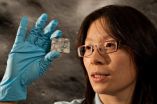(Press-News.org) Australian researchers have suggested that nations should abandon the concept of carbon emissions trading in favor of a carbon swap bank that might lead to genuine reductions in the amount of carbon dioxide greenhouse gas entering the atmosphere and so provide a mechanism for reducing climate change. Details of the carbon swap bank are outlined in the journal Interdisciplinary Environmental Review.
Carbon emissions trading was to be the economic environmental solution to climate change. The original impetus of the Copenhagen Treaty in 2010 was to mitigate rising global average temperature by allowing nations that reduced their carbon emissions to trade with other nations and so motivate all nations to find ways of cutting pollution. The idea for an emission trading scheme first emerged in the 1960s in the USA. "Cap and trade" was essentially an invention of economists, and in particular, Canadian economist JH Dales in 1968. The first such cap-and-trade system was launched as part of the US Acid Rain Program in Title IV of the 1990 Clean Air Act but similar schemes have been mooted in the face of global warming.
Emissions trading became part of the Kyoto Protocol through the efforts of the Clinton Administration. Its success in reducing sulfur dioxide emissions and so reducing acid rain was seen as successful and inexpensive. The international adoption of cap-and-trade followed from the notion that, "We've found an effective tool, domestically, for controlling emissions, and let's try it internationally."
Unfortunately, economic solutions to scientific and engineering problems rarely succeed especially once politicians become involved. Various proposed bills in the USA and Australia faltered because of agricultural issues and a failure to force those industries that produce the greatest tonnage of carbon dioxide pollution to alter their technologies. Moreover, carbon trading became nothing more than a financial vehicle with excessive derivatives, an uncontrolled offset market, and distortion of permits and taxes.
According to Carolyn Currie of Public Private Sector Partnerships, in Sydney, Australia, a carbon swap bank would allow direct deposits of sequestered carbon to be added and withdrawals of emission rights to be made. The process would not work like an investment futures market but would be facilitated by direct swap arrangements between a supplier of carbon sequestering technologies and methods, and those of the carbon polluter.
This approach gets around some of the major obstacles to carbon trading, namely the accurate measurement of a nation's emissions and the regulation and enforcement of emissions controls internationally. More troublesome is the fact that emissions trading is not incentive compatible and so can result in perverse incentives whereby a polluting firm given emission permits has no incentive to reduce emissions further because future emissions permits might then be restricted. Similarly, regions, such as the European Union, could protect the industries within member states by allocating permits to reduce international competition from outside such a region.
There are five main advantages to a carbon swap bank over other carbon emission controls, according to Currie:
the macroeconomic significance of avoiding the free market flaws of volatility in price
mitigation of the uncertainty that an emissions trading scheme will actually induce significant changes in technology
the likelihood that changes will not be confined to the domestic economies of developed nations
the cost of a permit may be significantly higher than carbon swap arrangements when corruption of the permit process and the profiteering evident in the EU are taken into account
changes towards sequestration and emissions reduction can be identified and monitored and progress to lower carbon cap nationally assessed by listing all specific projects aimed to sequester carbon and reduce emissions.
While developed nations are now baulking at the implementation of carbon emissions trading schemes, a government could easily experiment with a carbon swap bank to benefit, for instance, its forestry and agricultural sectors, while reducing its emissions, based on the concept of increasing productivity in the sequestering sector, while preserving non-renewable resources for future generations; no international agreements would be needed and there would be no detrimental effect on national industry or competitiveness, and no potential for financial wizards to embroil carbon emissions in their vicious circle of boom and bust, concludes Currie.
INFORMATION:"A solution to climate change economics – a carbon swap bank" in Interdisciplinary Environmental Review, 2010, 11, 236-247
END
Researchers from Israel have determined that more than half of liver transplant recipients develop post-transplantation metabolic syndrome (PTMS), placing them at greater risk for cardiovascular disease. Prior to transplantation only 5% of the patients were diagnosed with metabolic syndrome, but rates of obesity, hypertriglyceridemia, hypertension, and diabetes were significantly higher post transplantation. Full details of this retrospective-prevalence study are available in the January 2011 issue of Liver Transplantation, a journal published by Wiley-Blackwell on behalf ...
The use of combined treatments for severe acute pancreatitis is safe and effective in managing the disease, resulting in shorter hospitalizations and fewer radiological procedures than standard therapy, according to a study in Clinical Gastroenterology and Hepatology, the official journal of the American Gastroenterological Association (AGA) Institute. In a related study, doctors found that patients with infected pancreatic necrosis were able to avoid surgery through primary conservative treatment, which is in-patient medical treatment.
Pancreatitis refers to the inflammation ...
COLUMBUS, Ohio – New research shows that loss of a gene called NFKBIA promotes the growth of glioblastoma multiforme, the most common and deadly form of brain cancer, and suggests that therapies that stabilize this gene may improve survival for certain glioblastoma patients.
The study was published recently in the New England Journal of Medicine.
"We show that NFKBIA status may be an independent predictor of survival in certain patients with glioblastoma," says senior coauthor Dr. Arnab Chakravarti, chair and professor of Radiation Oncology and co-director of the Brain ...
Boston, MA (January 5, 2010) — For parents wanting to reduce the negative influence of TV on their children, the first step is normally to switch off the television set.
But a new study suggests that might not be enough. It turns out indirect media exposure, i.e., having friends who watch a lot of TV, might be even more damaging to a teenager's body image.
Researchers from Harvard Medical School's Department of Global Health and Social Medicine examined the link between media consumption and eating disorders among adolescent girls in Fiji.
What they found was surprising. ...
INDIANAPOLIS – A simpler form of testing individuals with risk factors for diabetes could improve diabetes prevention efforts by substantially increasing the number of individuals who complete testing and learn whether or not they are likely to develop diabetes.
Approximately 60 million Americans, one-third of the adult population, are pre-diabetic. Thirty percent of these individuals will develop Type 2 diabetes in less than a decade, yet most don't know they are at high risk for the disease.
A study published in the January 2011 issue of the American Journal of Preventive ...
Mount Sinai researchers coordinating the largest clinical study to date of "Sarcoid Like" Granulomatous Pulmonary Disease in World Trade Center (WTC) responders have found that the rate of the condition was increased in this group as compared to the records of pre-9/11 FDNY personnel. The study is published online in the American Journal of Industrial Medicine.
The Mount Sinai researchers studied almost 20,000 responders who had an initial exam in the Mount Sinai World Trade Center Medical Monitoring and Treatment Program between July 2002 and September 2007. Overall ...
Spartanburg, S.C., USA, 6 January, 2010 – Researchers at Wofford College discovered that a Border Collie comprehends the names of over 1000 objects, differentiating between names of objects and orders to fetch them. This research deepens the findings of researchers in Germany, who had discovered a dog that knew the names of a couple of hundred objects. Important questions were left open as to how far a dog could go, and whether the dog really understood that the object names were nouns and not commands to retrieve the object.
John Pilley and Alliston Reid answered two ...
The Moon, Earth's closest neighbor, has long been studied to help us better understand our own planet. Of particular interest is the lunar interior, which could hold clues to its ancient origins. In an attempt to extract information on the very deep interior of the Moon, a team of NASA-led researchers applied new technology to old data. Apollo seismic data was reanalyzed using modern methodologies and detected what many scientists have predicted: the Moon has a core.
According to the team's findings, published Jan. 6 in the online edition of Science, the Moon possesses ...
Show enthusiasm, ask questions and bring copies of a resume. These are just a handful of the most common interview tips for job seekers, but a person's posture may also be a deciding factor for whether they land a coveted position – even when the person on the other side of the desk is in a more powerful role.
According to new research from the Kellogg School of Management at Northwestern University, posture plays an important role in determining whether people act as though they are really in charge. The research finds that "posture expansiveness," or positioning oneself ...
Ibn al-Haytham's 11th-century Book of Optics, which was published exactly 1000 years ago, is often cited alongside Newton's Principia as one of the most influential books in physics. Yet very little is known about the writer, considered by many to be the father of modern optics.
January's Physics World features a fanciful re-imagining of the 10-year period in the life of the medieval Muslim polymath, written by Los Angeles-based science writer Jennifer Ouellette.
The feature covers the time when al-Haytham -- banished from society and deprived of books -- came up with ...

